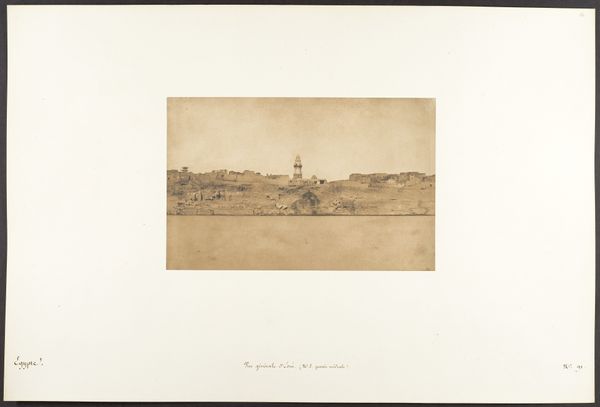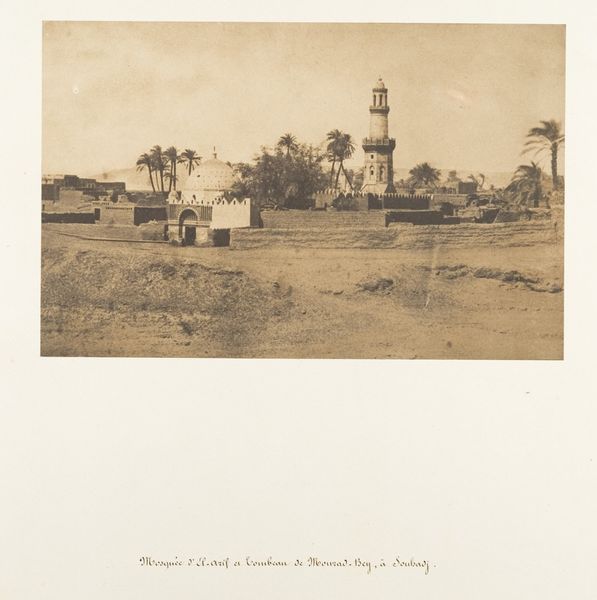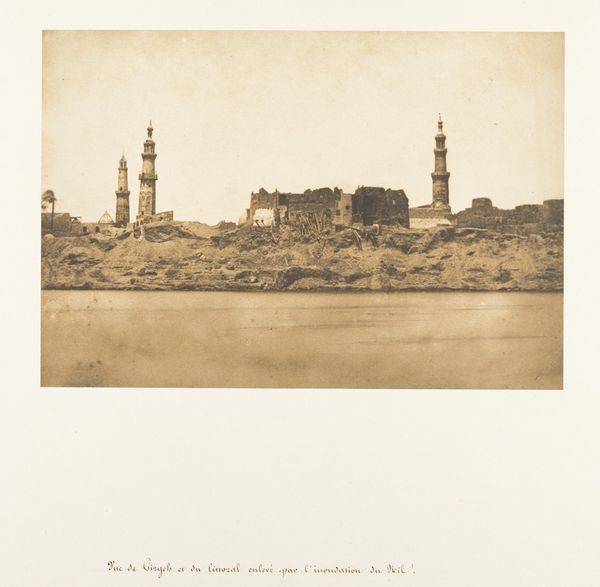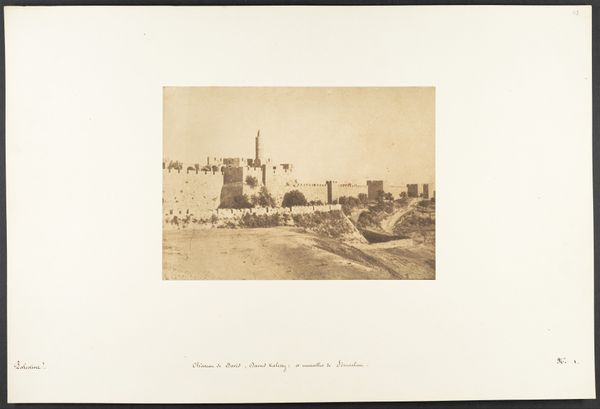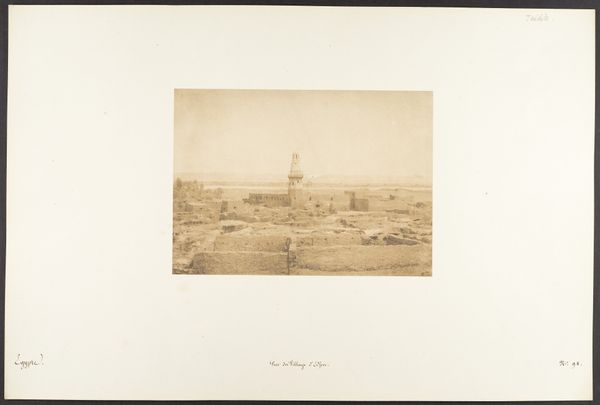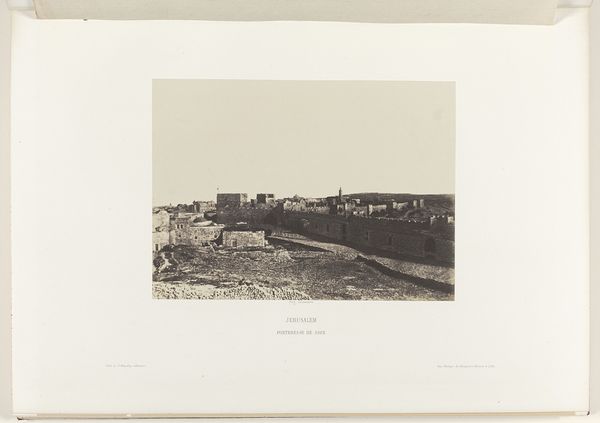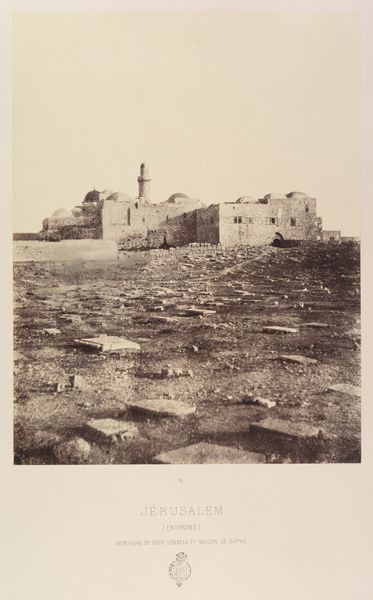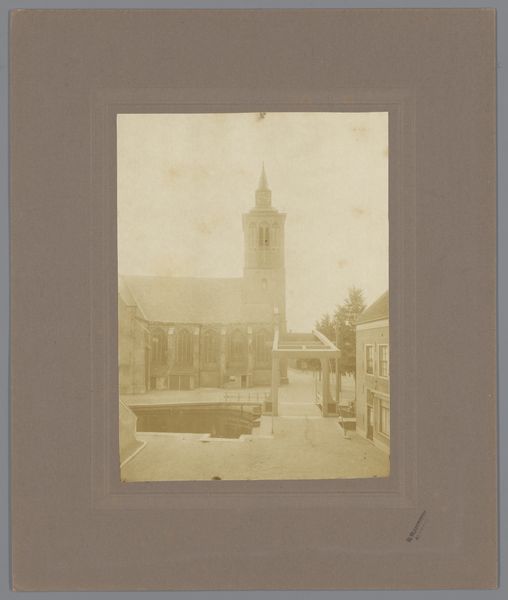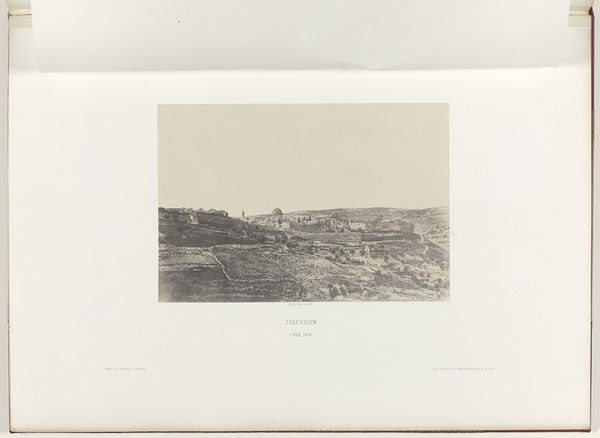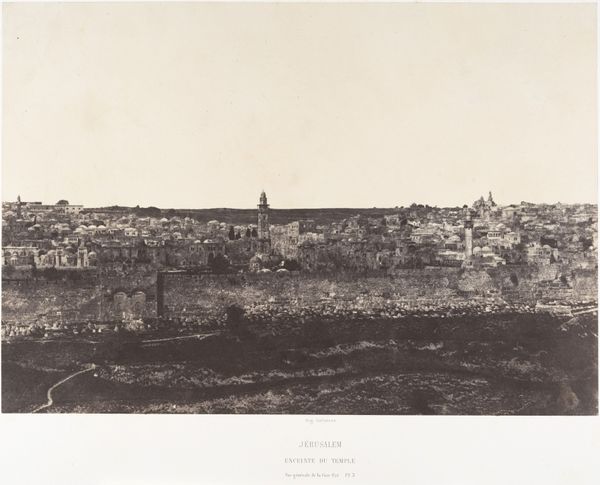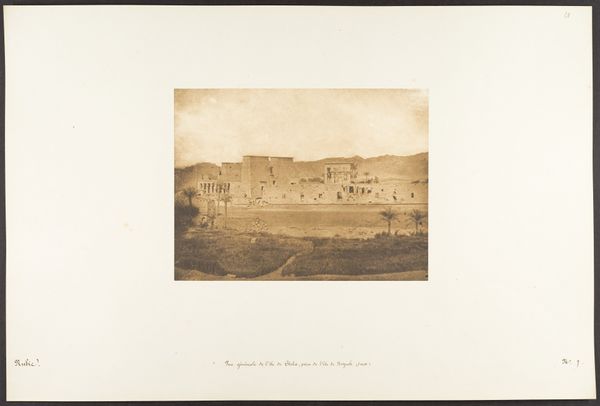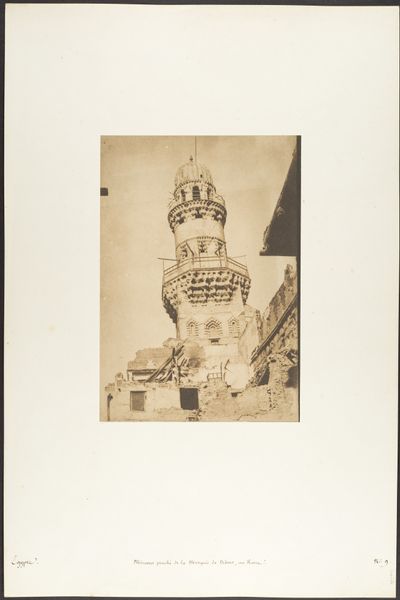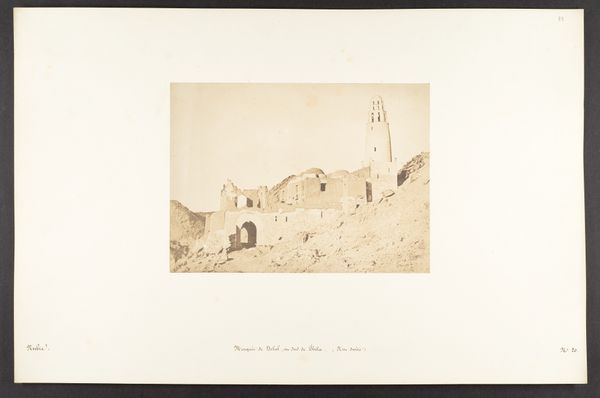
photography, albumen-print, architecture
landscape
photography
islamic-art
albumen-print
architecture
Dimensions: Image: 5 11/16 × 7 7/8 in. (14.5 × 20 cm) Mount: 12 5/16 × 18 11/16 in. (31.2 × 47.5 cm)
Copyright: Public Domain
Editor: Here we have Maxime Du Camp’s photograph, "Mosquée de Haou (Diospolis parva)," taken between 1849 and 1850. It’s an albumen print, so it's got this lovely warm tone. The starkness of the landscape contrasting with the architectural details of the mosque really grabs me. What’s your take on it? Curator: Well, placing this image within its historical context is key. Du Camp was commissioned to document Egypt, essentially providing visual evidence of France’s colonial interests. Consider how this single, carefully composed image shaped perceptions of the region back in Europe. Editor: So, the choice of *what* to photograph, like this mosque, and *how* to frame it, that’s all part of a larger agenda? Curator: Precisely. The framing presents the mosque as isolated and ancient, potentially reinforcing a narrative of a land needing outside intervention, perhaps even subtly justifying French presence. Note how the light emphasizes its imposing structure against an otherwise empty landscape. Editor: I see what you mean. It’s not just a photograph; it's a statement. Is there something about albumen prints that connects with this objective? Curator: Albumen printing was cutting-edge at the time, providing detailed, high-quality images. Displaying them suggested the photographer—and by extension, France—possessed technological and artistic superiority. So, consider the power dynamics inherent in even its creation. Editor: It’s fascinating how one photograph can reveal so much about the social and political climate of the time. Curator: Exactly! Considering art’s function within systems of power allows us to view it through an additional analytical dimension, not simply for its aesthetic properties. Editor: This has totally changed how I see this image. It's more than just a historical document; it’s an active participant in shaping history. Curator: And that critical perspective is something we should always consider when experiencing any work of art.
Comments
No comments
Be the first to comment and join the conversation on the ultimate creative platform.
